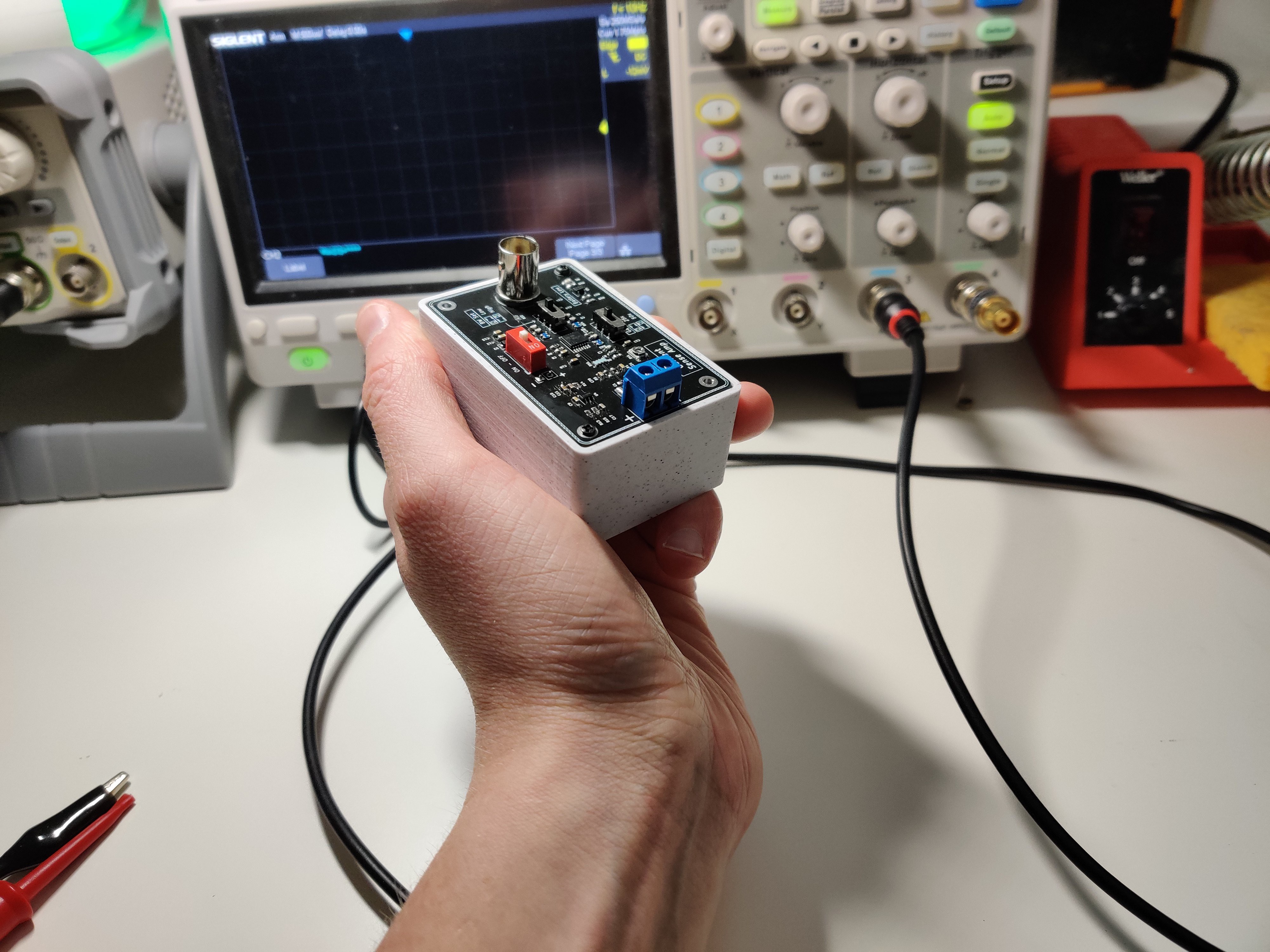Based on my testing I’ve designed about a 1-2% accurate CSA. Not the accuracy I was shooting for, but its good enough for a quick sanity check and general debugging. The widget is able to manage common mode voltages tested up to 15Vdc, and has a bandwidth of about 100-500kHz. Again, this is enough for most hobbyist circuits. I also designed a quick enclosure for the CSA in fusion 360 that will be pushed to the project files shortly.


Future Recommendations…
In my eyes, the disappointing spec for this design was the bandwidth. Due to component availability, I was forced to go with network resistors 10x higher impedance than what I wanted; (10k/50k) when I was hoping for (1k/5k). The higher impedance allows parasitic capacitance - for example at the inputs of the opamp - to more readily affect the overall bandwidth of the design. The MC33272A has 3pF typical input capacitance…. ☹
(++ Reminder to future me, make the BNC connector R/A, and maybe switch to MMCX)
CSA In Action….
Here’s the thing in action. I’ve tossed together a low-side switch with an NMOS from my parts bin. CH1 is the gate voltage (Vgs) coming from my function generator, CH2 is the drain voltage (Vds), and CH3 is the current going through the drain (Idrain). Current goes through the CSA (0.2ohm) -> 10ohm Resistor -> NMOS Drain.


Why do I think this cool?
How could we get a similar capture without the CSA…
Use isolated scope – but these are pretty rare, and I personally don’t have one.
Use a differential probe – but these cost a pretty penny (that's what the CSA fundamentally is)
Use the scopes MATH – but this would take up 2 channels, and it slows down my scope
Just accept 1 waveform – that’s no fun…
Discussions
Become a Hackaday.io Member
Create an account to leave a comment. Already have an account? Log In.